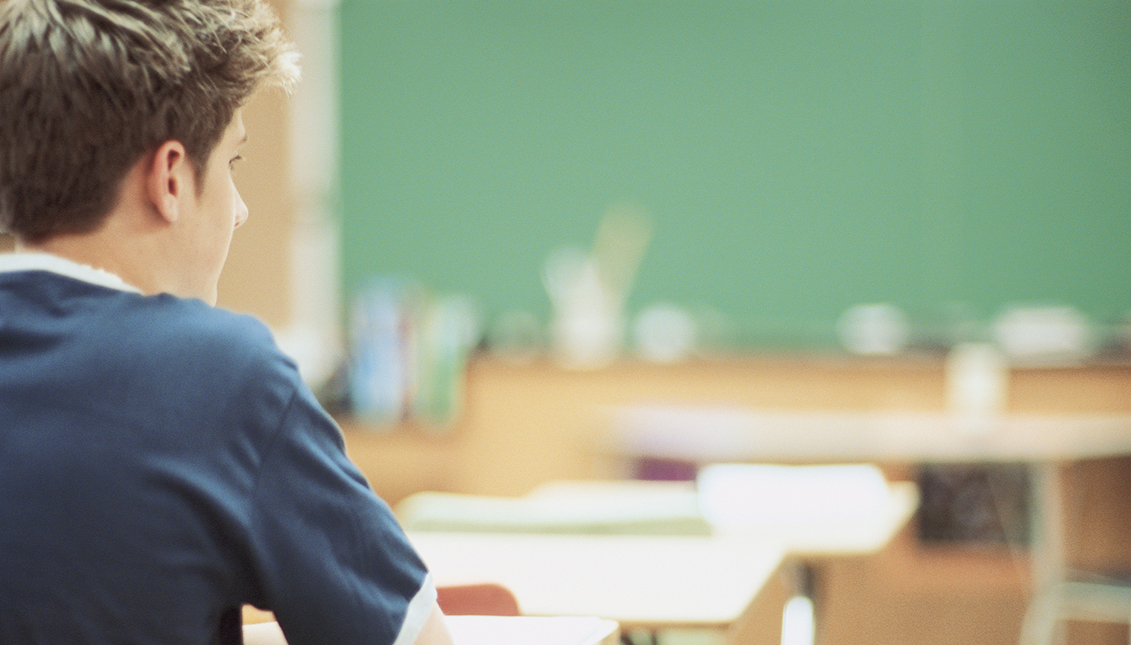
[OP-ED]: Helping kids handle the ‘Trump Effect’ in our nation’s schools
A new study by the Southern Poverty Law Center, a civil rights advocacy organization, says that more than two-thirds of 2,000 teachers surveyed reported students -- m
MORE IN THIS SECTION
A new study by the Southern Poverty Law Center, a civil rights advocacy organization, says that more than two-thirds of 2,000 teachers surveyed reported students -- mainly immigrants, children of immigrants and Muslims -- expressing concerns or fears about what might happen to them or their families during a Trump presidency.
Since the election, more than half of teachers have seen an increase in uncivil political discourse in their schools or classrooms, and more than one-third report having observed an increase in anti-Muslim or anti-immigrant sentiment.
The study, titled “The Trump Effect: The impact of the presidential campaign on our nation’s schools,” cites a Virginia elementary school teacher who said that students are “crying in the classroom and having melt-downs at home.” An Oregon primary-school teacher said her black students are “concerned for their safety because of what they see on TV at Trump rallies.” In North Carolina, a high school teacher said she has “Latino students who carry their birth certificates and Social Security cards to school because they are afraid they will be deported.”
These are not outlier incidents cherry-picked for effect -- Donald Trump-related anxiety was obvious when school started in late summer and ramped up on the day after the election.
Both in the school building where I teach and in neighboring districts, not only were the kids keyed up on Nov. 9, a lot of teachers were in near hysterics. In my building, there were teachers who refused to even talk about the election and others who cried in front of students.
At a nearby district, racist language was scrawled on a bathroom door and minority students staged a protest that went viral on social media, prompting my school’s students to plan their own walkout.
As the drama unfolded, it occurred to me that the students may not have been as likely to give in to hysteria if the adults in their school buildings had acted less like hyper-partisans and more like grown-ups who could keep their cool. Instead, some of those in charge were making an unpredictable situation even scarier with their emotionality.
I wasn’t completely off-base -- the next day our administration sent out guidance from the National Association of School Psychologists (NASP) on how to reinforce safe, supportive and positive post-election school environments.
Considering that the backlash to the anti-Trump sentiment has provoked even more taunting and sometimes vitriolic anti-immigrant and anti-minority language from his supporters, some tips from the psychologists continue to resonate and should be taken to heart by anyone with kids who are being confronted with politically motivated malice or bigotry:
-- “Reinforce a sense of positive [school] community. ... We function as a nation only when we have that shared sense of relationship; helping children identify and develop those relationships is vital.” In other words, don’t reinforce “us vs. them” mentalities.
-- “Model and teach desired behaviors. ... Adults can help children and youth manage their reactions to events in the news and their communities by understanding their feelings, modeling healthy coping strategies, and closely monitoring their own emotional states and that of those in their care.” I interpret this with Michelle Obama’s words from the campaign trail: “When they go low, we go high.” Or more simply put -- be the adult in the room.
-- “Reassure children that they are and will be OK.” This one is tough when children are actively facing bullying from other students or community members who are talking about building walls, deportations or making assertions about suspected terrorists. But as adults, it is our responsibility to provide comfort and a sense of stability instead of feeding fear in an attempt to empathize.
-- “Encourage children to channel their views and feelings into positive action.” After the school where the racist graffiti had appeared went through its cycle of anger and protest, a group of students uplifted the campus by posting 2,500 sticky notes with inspirational and positive messages. It seemed to help.
This is but a small selection of the tips NASP provided for dealing with a transition of presidential power that is frightening so many, and its guidance deserves a thorough reading by anyone who interacts with kids.
We are all entering a time of uncertainty and anxiety, but it is especially challenging for school-age kids who, as a cohort, are the most diverse portion of our population.
Let us acknowledge that this uneasiness is real -- and do all we can to help our kids through it.







LEAVE A COMMENT:
Join the discussion! Leave a comment.